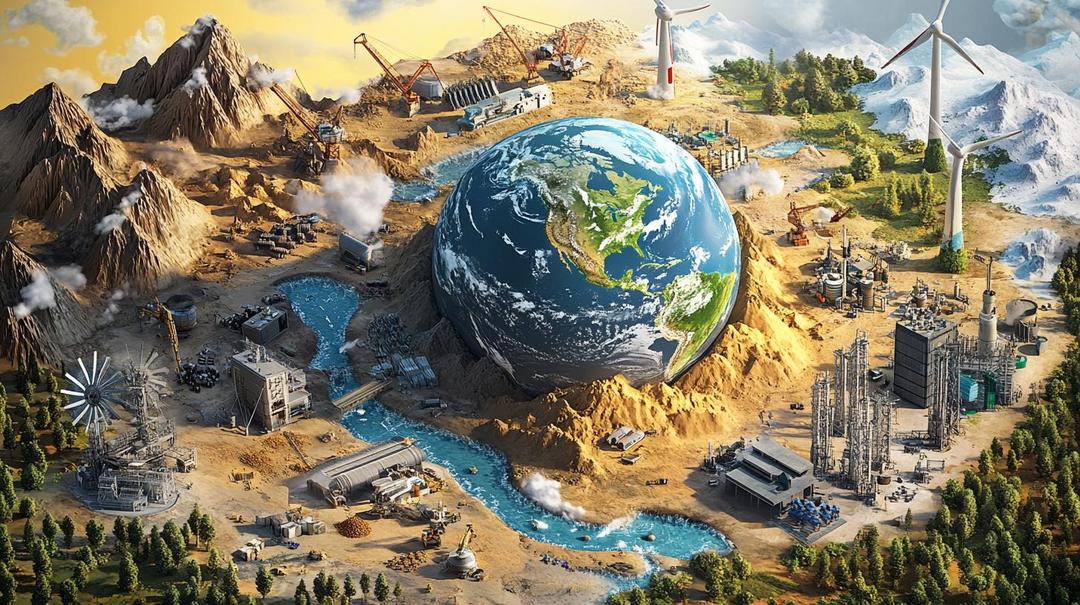Did you know that your next smartphone or electric vehicle might be harder to make because of export restrictions on rare earth elements? These elements, despite their name, aren’t that rare, but the geopolitical tug-of-war over them is! From cutting-edge tech to electric vehicles, rare earths power some of the world’s most critical industries. But when countries impose restrictions on their exports, it creates ripples across global markets.
Let’s dive in!
What's Inside
What Are Rare Earth Export Restrictions, and Why Do They Matter?
Rare earth elements (REEs) are a group of 17 metallic elements crucial to modern technology, including neodymium, dysprosium, and yttrium. These elements play a critical role in:
- Advanced electronics
- Renewable energy technologies
- Defense and military equipment
- High-performance magnets
- Smartphone and computer components
Export restrictions on these elements involve governments limiting the quantity, value, or destination of rare earth mineral shipments. These controls can significantly impact global supply chains by:
- Creating artificial scarcity
- Driving up production costs
- Disrupting manufacturing in dependent industries
- Leveraging economic and geopolitical power
Strategic Importance in Global Markets
The restrictions are particularly impactful because rare earth elements are nearly impossible to substitute in many high-tech applications, making them strategic resources with outsized economic and technological implications.
The Geopolitics of Rare Earths: Which Countries Hold the Power?
China dominates the rare earth element landscape, controlling over 80% of global production. This monopoly stems from:
- Extensive mineral reserves
- Low-cost extraction methods
- Historically lenient environmental regulations
- Strategic government support for the industry
Global Rare Earth Reserves
Key countries with significant rare earth reserves include:
- China (largest producer)
- United States
- Australia
- Russia
- Brazil
China’s export control strategies serve multiple objectives:
- Economic leverage
- Geopolitical positioning
- Environmental protection
- Domestic industry development
Economic Impacts of Rare Earth Export Restrictions
Export restrictions create cascading economic consequences across multiple industries:
Price Volatility
- Electronics production costs increase
- Electric vehicle manufacturing becomes more expensive
- Renewable energy technology development slows
Historical Precedent: 2010 China-Japan Dispute
In 2010, China temporarily blocked rare earth exports to Japan following a maritime conflict, causing:
- Immediate price spikes of 500-700%
- Global supply chain disruptions
- Accelerated alternative sourcing efforts
Current and Projected Trends
- Continued price instability
- Increased investment in alternative mining locations
- Growing interest in recycling and urban mining technologies
Historical Context: Rare Earth Trade Wars and Policy Shifts
Key Timeline Events
- 2010-2011: Rare earth crisis erupts
- 2014: World Trade Organization rules against China’s export restrictions
- 2019-2021: Increasing global tensions around rare earth supply
Policy Evolution
Western countries have developed strategies including:
- Strategic stockpiling
- Diversifying mineral sources
- Investing in domestic extraction capabilities
- Supporting international trade agreements
Environmental Challenges of Rare Earth Mining and Export Control
Rare earth mining presents significant environmental challenges:
- Soil degradation
- Water pollution
- Radioactive waste generation
- High carbon emissions during extraction
Ethical Considerations
Export restrictions sometimes align with environmental protection goals by:
- Limiting environmentally destructive mining practices
- Encouraging more sustainable extraction methods
- Protecting local ecosystems in mining regions
How Are Companies and Industries Adapting to Restrictions?
Corporate Strategies
Leading tech companies are pursuing:
- Alternative material research
- Recycling initiatives
- Supply chain diversification
- Synthetic rare earth development
Industry-Specific Innovations
- Electronics: Developing lower rare earth dependency
- Automotive: Exploring alternative motor technologies
- Renewable Energy: Investigating substitute materials
Future Outlook: Can the World Wean Off Rare Earths?
Emerging Developments
- New mining locations (Australia, Greenland)
- Advanced recycling technologies
- Synthetic rare earth element research
- Alternative material development
Expert Predictions
- Continued geopolitical tension around rare earth resources
- Gradual diversification of global production
- Increasing focus on sustainable extraction methods
Conclusion
As global demand for technology and clean energy soars, rare earth elements remain central to many industries. Even though some businesses are trying to find “rare-earth-free” alternatives, there is going to be a point where there is no substitute. This is why recycling efforts are so important, and domestic mining is critical.
FAQs
Why are rare earth elements so essential to modern technology?
Rare earth elements are critical for manufacturing high-tech products like smartphones, electric vehicles, and wind turbines, thanks to their unique properties like magnetic strength and conductivity.
What sparked export restrictions on rare earth elements?
Geopolitical events, particularly China’s dominance in the market and its decision to reduce exports in the past, triggered fears of supply shortages and price increases.
How do rare earth export restrictions affect global trade?
These restrictions can disrupt supply chains, leading to increased prices for goods with rare earths and the need for countries to search for alternative trade or domestic production strategies.
Are there environmental downsides to mining rare earth elements?
Yes, rare earth mining causes significant environmental damage, including soil erosion, pollution, and radiological exposure. Restricting exportation is often seen as a way to limit these negative effects.
Can rare earth elements be recycled?
Yes! Recycling rare earths from products like electronics is a growing industry, although it’s not yet widespread enough to meet the current global demand.


Dustin
Driven by a fascination with rare earth elements and their role in powering modern tech and engineering marvels. A true car and tech enthusiast, he loves exploring how these hidden heroes fuel our most exciting innovations.
You Might Also Like…